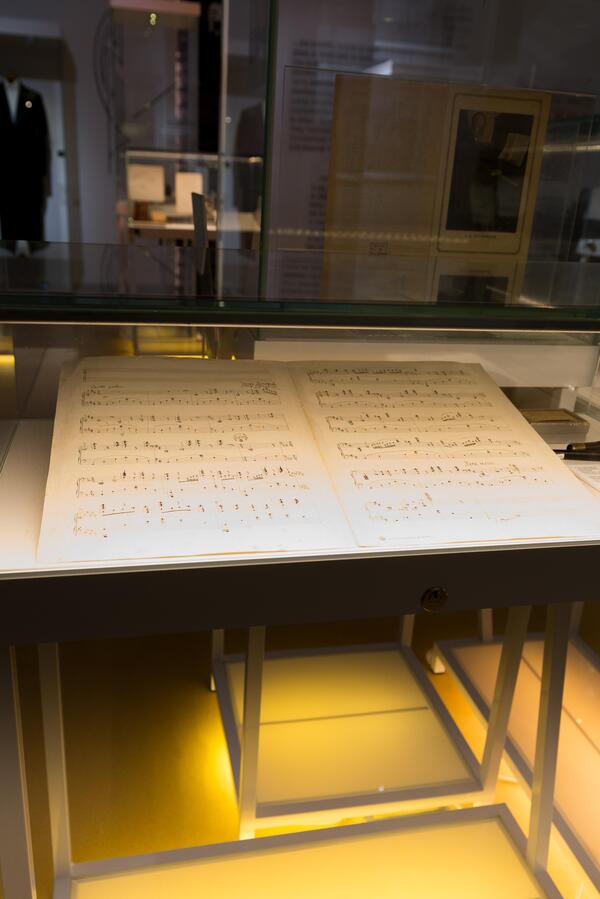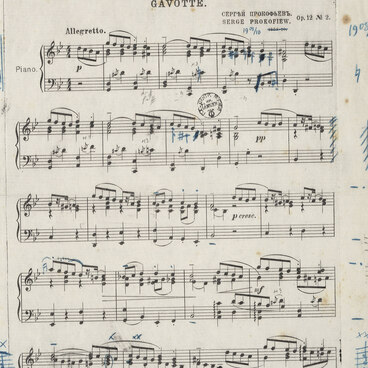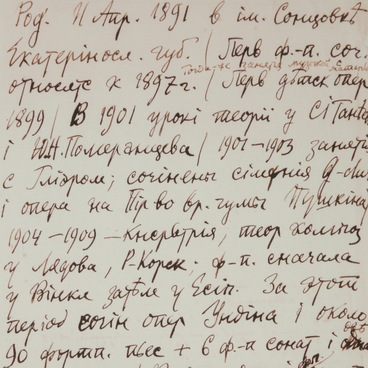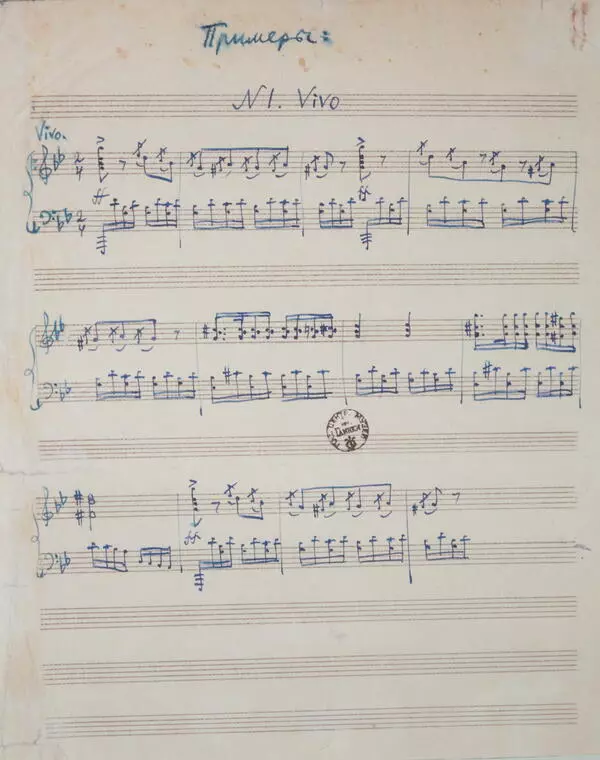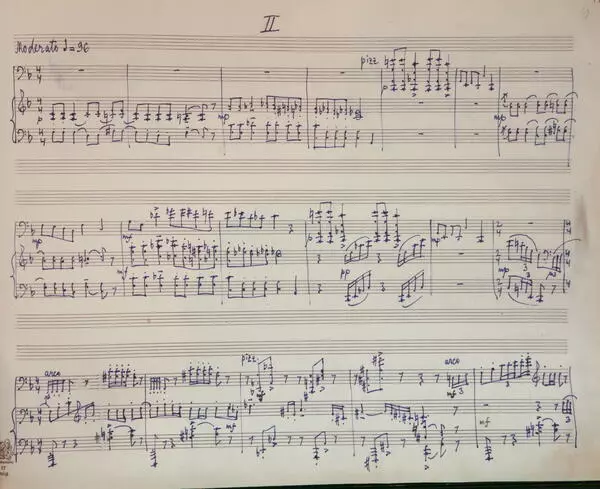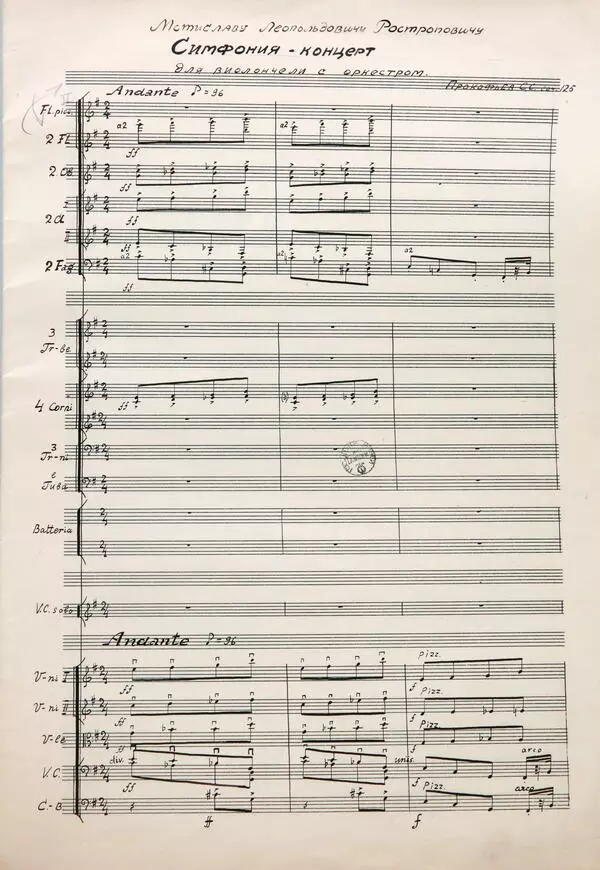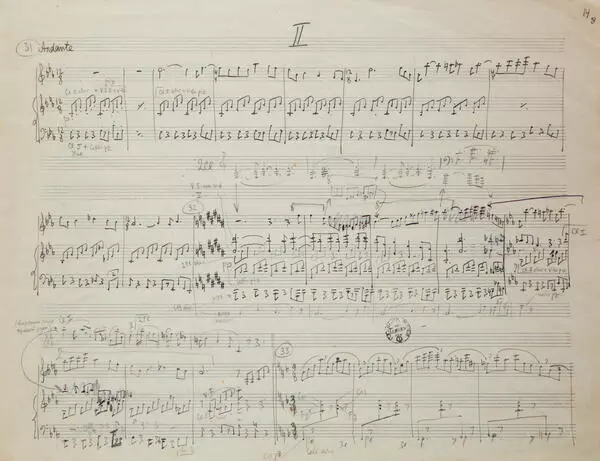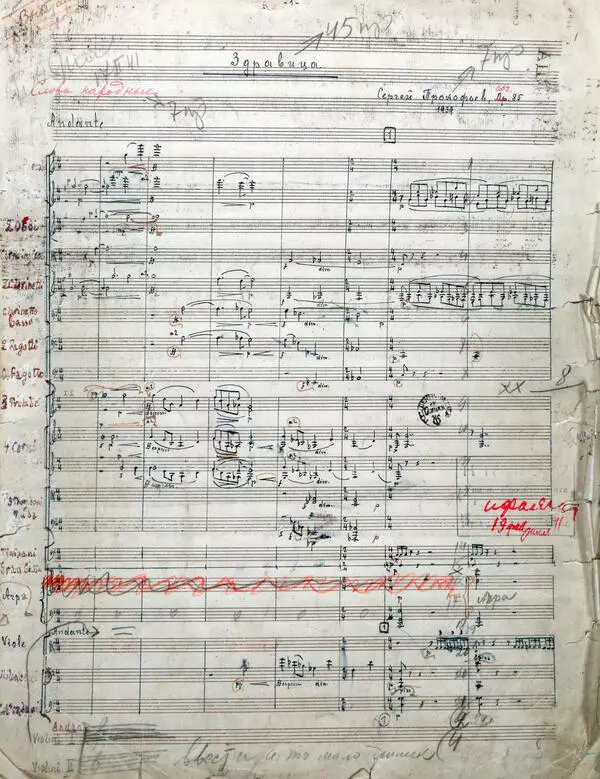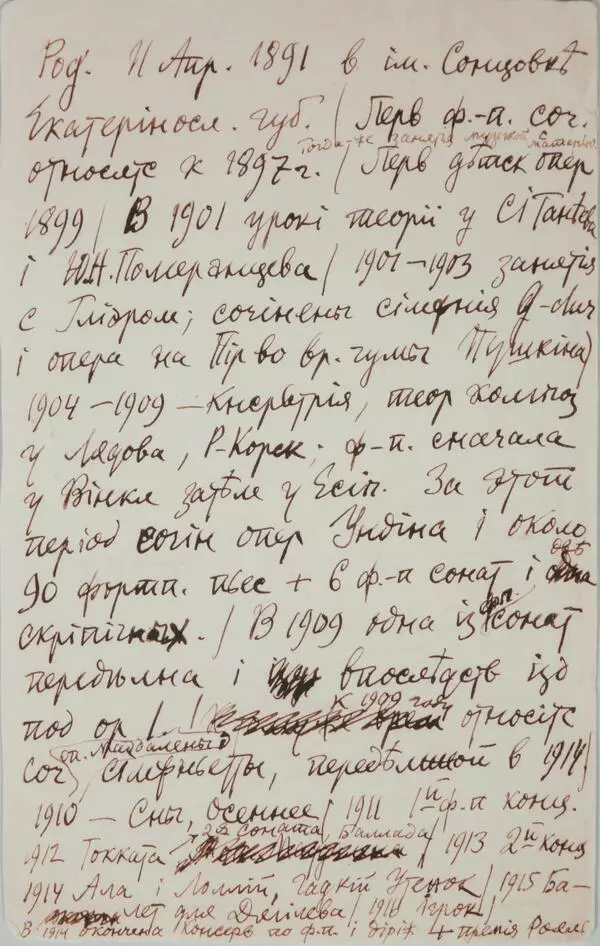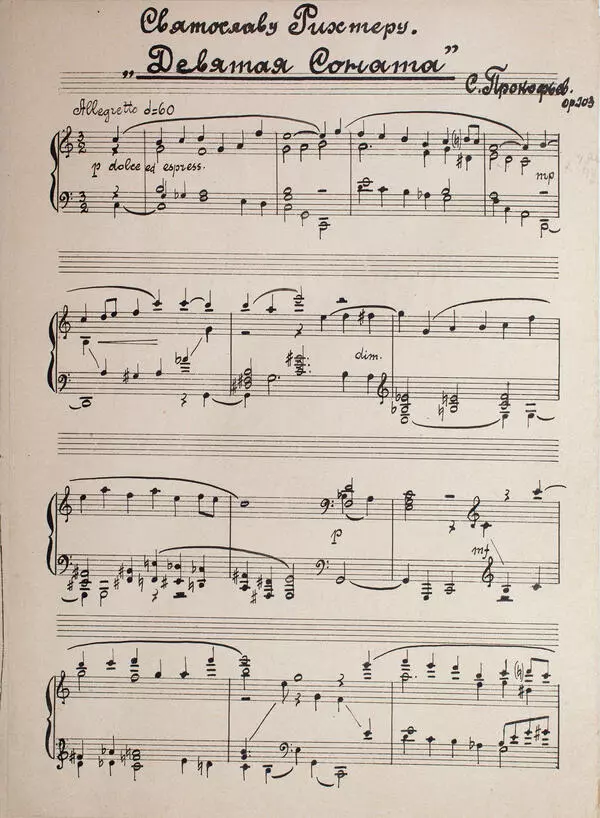Sergei Prokofiev composed the piano cycle “Visions fugitives” between 1915 and 1917. Its title was inspired by a poem by Konstantin Balmont, “In every fugitive vision // I see whole worlds: // They change endlessly, // Flashing in playful rainbow colors.”
“Visions fugitives” is exactly what the title says. This is a cycle of twenty small pieces, each about one minute long. “Visions fugitives” is a very diverse series that includes lyrical, playful, dancing, and dramatic pieces. The nineteenth piece was inspired by the February Revolution of 1917: Prokofiev stated that it reflected “the crowd’s excitement rather than the inner essence of revolution.”
The museum’s collection includes an autograph of the seventh piece that imitates the sound of a harp. The autograph contains a dedication to Eleonora Damskaya, a harp player and Prokofiev’s friend at the Conservatory. Prokofiev composed the Prelude for Harp and the piece “To Eleonora” for Damskaya.
Prokofiev was constantly in touch with Damskaya and spent hours on end talking to her over the phone. In his diary, he wrote, “In the evening, I study very little but instead telephone Damskaya, and we have set a new record for long phone calls: two hours and ten minutes!” The record was soon broken. Prokofiev took an account of their conversations, “We set a new record for telephone calls: an hour and a half in the afternoon and another hour and a half in the evening, altogether three hours in a single day.” He also confessed, “Eleonora is, I realized, the only person with whom I have maintained a close relationship throughout the winter, our constant telephone conversations always finding something interesting to discuss, and never once falling out.”
The seventh piece in the “Visions fugitives” cycle is one of the most beautiful piano compositions by Prokofiev.
“Visions fugitives” is exactly what the title says. This is a cycle of twenty small pieces, each about one minute long. “Visions fugitives” is a very diverse series that includes lyrical, playful, dancing, and dramatic pieces. The nineteenth piece was inspired by the February Revolution of 1917: Prokofiev stated that it reflected “the crowd’s excitement rather than the inner essence of revolution.”
The museum’s collection includes an autograph of the seventh piece that imitates the sound of a harp. The autograph contains a dedication to Eleonora Damskaya, a harp player and Prokofiev’s friend at the Conservatory. Prokofiev composed the Prelude for Harp and the piece “To Eleonora” for Damskaya.
Prokofiev was constantly in touch with Damskaya and spent hours on end talking to her over the phone. In his diary, he wrote, “In the evening, I study very little but instead telephone Damskaya, and we have set a new record for long phone calls: two hours and ten minutes!” The record was soon broken. Prokofiev took an account of their conversations, “We set a new record for telephone calls: an hour and a half in the afternoon and another hour and a half in the evening, altogether three hours in a single day.” He also confessed, “Eleonora is, I realized, the only person with whom I have maintained a close relationship throughout the winter, our constant telephone conversations always finding something interesting to discuss, and never once falling out.”
The seventh piece in the “Visions fugitives” cycle is one of the most beautiful piano compositions by Prokofiev.

